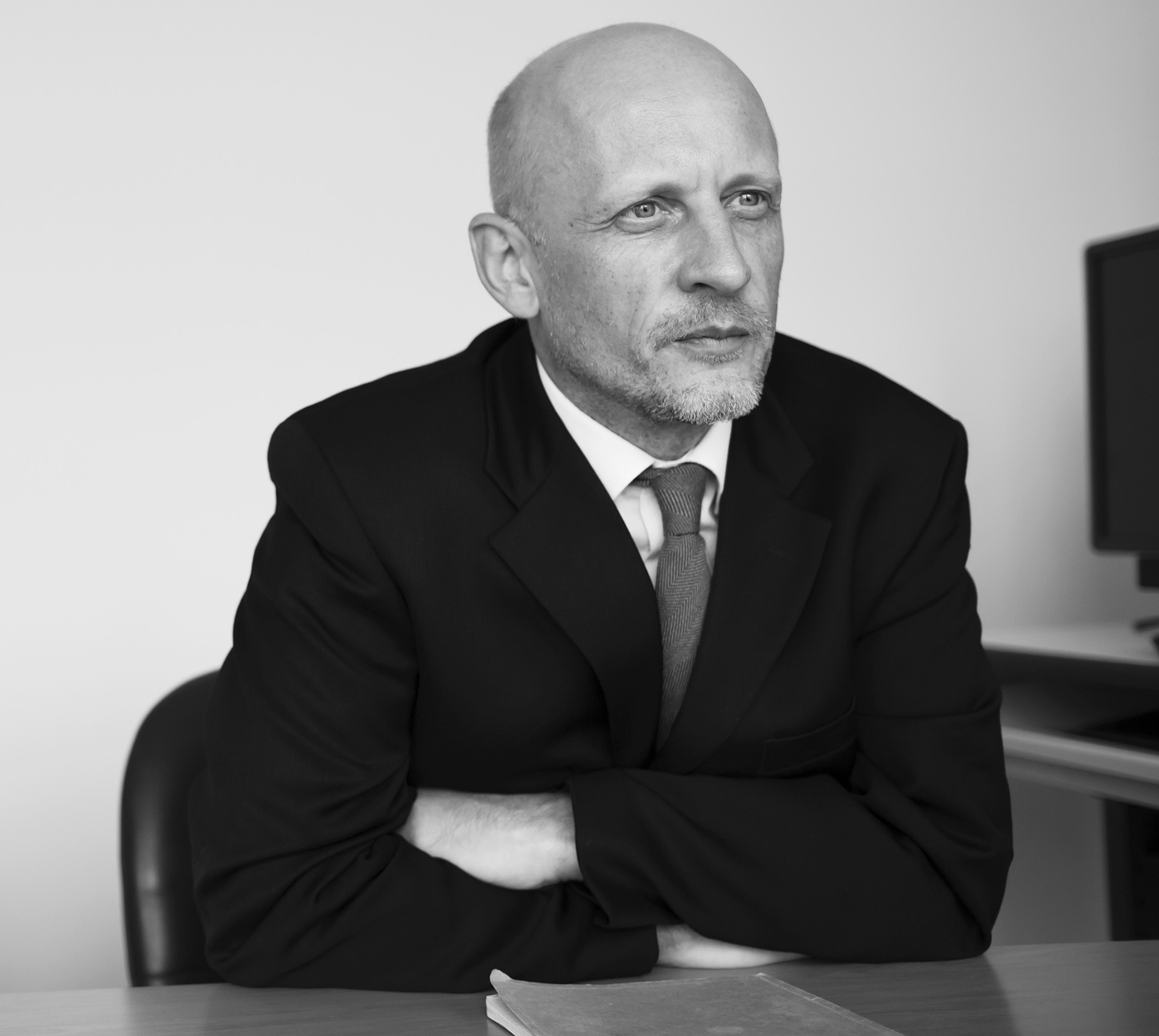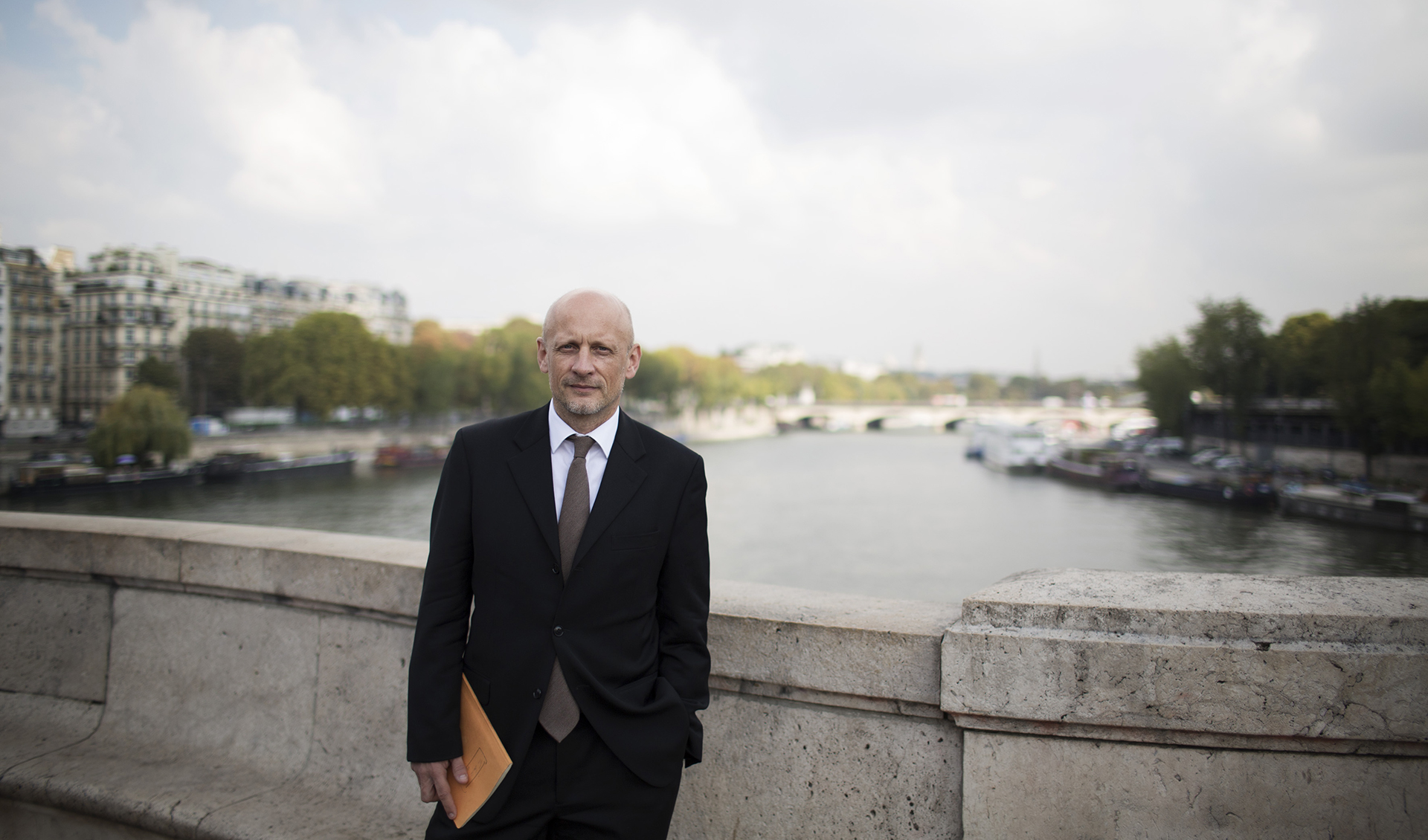Optimistic observer
Bjørn Rasen and Tonje Thoresen, NTB (photos)
China’s role in the energy picture is changing and that affects everybody, says Tim Gould, who keeps a particularly close eye on such developments as head of the World Energy Outlook team at the International Energy Agency (IEA).

More oil.
It is still too soon to write oil’s obituary, says Tim Gould, head of the World Energy Outlook team at the IEA. “For the moment, demand continues to increase at well above the rule of thumb, which puts the annual rise at one million barrels per day.”
The diesel generators drone around the IEA offices in Paris near the banks of the Seine, where the whole area is under development. Ten stories above the racket, Gould explains the Agency’s thinking on trends in global energy demand.
With the world close to consuming 100 million barrels of oil per day, not to mention other forms, the questions are whether the IEA sees changes in consumption patterns and whether tomorrow’s technology and energy mix are sustainable.
Gould ultimately expresses an optimistic view, after going into detail about the agency’s views on many of the big challenges facing the world.
He has received a copy of Norwegian Continental Shelf’s second issue in 2006 containing its previous interview with the IEA. That was the year Facebook began and Italy won the football World Cup.
The question is whether the world has developed as the Agency expected 12 years ago – and how it now thinks about the prospects out to 2040.
On demand
It is still too soon to write oil’s obituary, Gould observes. “For the moment, demand continues to increase at well above the rule of thumb, which puts the annual rise at one million barrels per day.”
This growth has come from the developing world over the past decade – particularly China. But he says the Chinese role in oil – and many other energy markets – is changing in interesting ways and they may not remain the main force in growing demand.
“You need to look to India and other parts of the developing world to see the main forces behind future growth in the oil market,” Gould maintains.
Other important factors are that technology and policies have moved on over the past decade. “There’s a more widespread focus on fuel efficiency. And electric cars are now a feature of the oil market in a way they weren’t only a few years ago.”
He points out that more efficient fuel use is already making a very big difference. Three out of every four passenger cars sold worldwide are now covered by some form of fuel efficiency standard.
The position for electric cars varies widely by country, with Norway among those pushing faster than others. Now China is making a big drive for electric mobility, not only with cars but also for scooters and buses.
“A few more years may be needed before this starts to displace really substantial amounts of oil,” Gould says. “But we have a long-term outlook to 2040. The further you look into the future, the more this becomes a real feature.”
He does not disagree with the observation by environmental guru Lester Brown in the early 1990s that a Chinese shift from bikes to cars would create a real problem.
“Vehicle ownership in China is one of the most important questions for anyone who looks into the future, and particularly energy markets and oil demand. Today, around 120 per 1 000 people in China own a vehicle compared with 700 per 1 000 people in the USA.”
“But in Beijing and many other Chinese cities, the city authorities have put a number of measures in place to constrain the rise in individual vehicle ownership, especially for traditional petrol-fuelled cars. Unless it’s electric, registering a new car there isn’t straightforward.”
Mass transit is another important issue, Gould notes. The big question is what transport policy emerging cities in central and western China will follow. As ever with China, relatively small variations in outcomes there could have a substantial effect on global trends.
On cars
Populous India is a different case, he says. Its energy demand is only a third of China’s today and vehicle ownership is likewise relatively low.
Indications from India that it wants to push electric vehicles are therefore a very interesting development. But Gould believes it remains too early to say how fast their development will be.
Twelve years ago, IEA executive director Fatih Birol told Norwegian Continental Shelf that the use of fossil fuels in the transport sector needed to change.
Asked whether this has happened, Gould replies that transport is indeed the sector to watch. Oil currently dominates the fuel mix in public transport by road, accounting for about 94 per cent. “But you can see some competitors and policies which may reduce that share.”
He also stresses the need to distinguish between different transport areas. A future without oil is more attainable for passenger cars than for heavy goods vehicles and shipping.
“There’s a real possibility that the amount of oil used for passenger cars in 2040 will be lower than today, despite an expected doubling in the worldwide car fleet to two billion units.”
“A number of elements play into that. The main one is fuel efficiency, but others include switching to biofuels in some regions as well as natural gas and, of course, electricity.”
But passenger cars only account for a quarter of world oil demand. Sectors where substitution away from oil is difficult must also be addressed to get the full picture.
Gould says one of the biggest growth sector is lorries, where fuel economy standards are much less widespread than for cars.
While alternatives to oil exist in the maritime field, they may not challenge as much and as quickly. And aviation has very few alternatives to oil.
“To put all these together, you could see oil demand fall for cars and power generation. But this is outweighed by rises for the lorries, aviation, maritime and petrochemicals.”
Asked whether hydrogen could be an alternative, Gould reflects before answering. He and his colleagues observe that the momentum for cars is with electric propulsion.
“Batteries can work for cars, but the larger the load, the tougher the task for them. This makes electrification of heavy freight more difficult,” he points out.
“Hydrogen is a possible alternative for the latter. In fact, there are many possible roles that hydrogen could play, not just in transport but in other sectors too. But that’s looking some way off into the future. A large-scale role for hydrogen isn’t around the corner.”
On politics
Asked whether oil, gas or coal have increasingly become more a matter of politics over the past 12 years, Gould says that energy will always be a political question.
“What’s become stronger are the environmental concerns people have over energy, not least as a result of the Paris agreement on climate change.”
He also observes that energy security has changed because of shale gas and tight oil production in the USA. This was only just starting to be talked about a decade ago.
And the security of electricity is now becoming a hot topic, as it takes a larger share in energy use and the rise of renewables changes the way that power markets operate.
The Paris agreement involved a wide range of nations signing on to move beyond the need for fossil fuels, Gould notes. But the IEA does not believe this should stop investment in oil.
“We’ve done a lot of modelling for scenarios which comply with the Paris agreement. In these, oil demand is declining in the 2030s by around one to 1.5 per cent per year.
“In Norway and many other countries, the decline in production from your existing fields is much steeper. That leaves a gap which still needs to be filled by new projects.
“So, even in a scenario fully consistent with Paris, you still have a significant need for upstream activity. Investment in oil will continue to form part of a least-cost approach to the energy transition.” On gas demand The future of gas in various markets is also the subject of much discussion, and some maintain that demand will fall quickly. Gould does not agree.
Prospects vary by country but gas does relatively well in the IEA’s outlook to 2040, he says, and certainly better than the other fossil fuels.
“That’s true both with the policy scenarios which are shaping up now and in a scenario complying with Paris. In all these cases, global gas use increases from where it is today.”
The reasons are simple, he says. Gas, working alongside renewables, fits well into a scenario where the world cares more about environmental outcomes. And that can be observed in many developing parts of the world.
Concern over air quality in China’s large cities is huge, for example. That question cannot be resolved only by expanding renewable electricity generation.
Gould notes that many mediumsized Chinese enterprises, located on the outskirts of major cities, need high-temperature heat for their operations.
Currently they burn coal, and this is a major cause of poor urban air quality. So the priority is to move over to alternative fuels. And gas is a good solution.
The picture has also changed in the USA, where gas has been important in reducing CO2 emissions along with an expansion in renewables. “In 2016, more US electricity was generated from gas than coal for the first time,” he observes.
“So, from my perspective, gas fits into that picture of change in the energy world. It’s more attractive as an option for many importing countries.
“Twelve years ago, 15-16 countries imported liquefied natural gas (LNG). That number is now well over 40. With relatively low prices and an increasingly competitive global market, gas fits into the energy strategies of more countries.”
LNG is more flexible than pipeline transport, and the IEA forecast in 2009 that its share of the market was set to rise. But Gould says this shift is even faster than the agency envisaged at the time, with Australia and the USA helping to put ever more LNG on the market.
Europe is reasonably well placed here, and Gould believes that competition between suppliers is beneficial for European buyers. The region is surrounded by major resource-holders from Russia – likely to remain the biggest supplier – to Norway, the Caspian/Middle East and North Africa.
And gas can be supplied by pipeline as well as through LNG shipments to terminals in the Mediterranean or north-west Europe for pumping into the extensive distribution network.

Energy gap
“The world’s population is set to expand by around 1.7 billion people up to 2040,” Gould observes. “And many people worldwide also have no access to modern energy, including 1.1 billion without electricity. So there’s a huge gap in the global energy system which needs to be filled.”
On the energy gap
The IEA appreciates the paradox that the world’s population is growing, with an associated need for more energy, at the same time as countries ought to cut fossil fuel consumption. How to meet this challenge is the question. Over the past 25 years, the fuel which met the largest share of global demand growth was coal. But over the next 25, renewables, together with gas, will meet more than 80 per cent of the anticipated rise in consumption.
“The world’s population is set to expand by around 1.7 billion people up to 2040,” Gould observes. “And many people worldwide also have no access to modern energy, including 1.1 billion without electricity.”
“So there’s a huge gap in the global energy system which needs to be filled. In our view, this can be done. India, for example, announced recently that every village in the country now has an electricity connection, a huge step towards linking every household. But there’s much more to do, especially in sub-Saharan Africa.
“World Energy Outlook identifies how electricity access can be improved – the combination of fuels and technologies which can meet the UN sustainable development goals for 2030.”
A lot has changed over the past decade, Gould acknowledges, including very large cost reductions for renewable technologies. That opens some new pathways for access, especially for rural communities far from a centralised electricity grid.
Another huge challenge is that 2.6 billion people worldwide use biomass as cooking fuel, which causes deforestation and poses health risks for people preparing food over open fires.
Liquefied petroleum gas (LPG) could play a bigger role here, Gould believes. “LPG stoves are part of the solution: improving the availability of LPG is a central part of Indian government policy to avoid households cooking indoors over an open fire.”
On technology challenges
The IEA does not believe the world will lack energy towards 2040, Gould says, but admits that oil and gas resources will be a challenge.
“The shale revolution has changed the debate around oil and gas resources, from worries about scarcity to a story of abundance. Shale is a good example of how innovation and technology can change the course of the energy sector.
“It’s not the only one – there’s a lot happening now in offshore oil and gas to streamline designs and use digital technologies in a way which makes these projects more competitive.”
“But it’s still the case that, as the more accessible resources deplete, the oil and gas industry will need to move to more complex reservoirs in more difficult and remote regions. So continuing the focus on efficiency and technology learning is very important.”
The pace of technological change, Gould notes, is going to be one of the keys to the future.
“Look at how the costs of solar, batteries and onshore wind have come down over the past few years, and what policy support, technology advances and a maturing supply chain are now doing for offshore wind.”
“There are technologies on the horizon which could change the picture again,” he added. “After fixed-foundation turbines, you could see growth in floating offshore wind, which – once costs come down – would bring a huge additional resource into play.”
But in general, the pace at which new technologies are coming into the energy system still lags behind what is needed to meet sustainability goals.
“At the IEA, we’re closely following progress with 38 different clean energy technologies,” Gould says. “But only a handful of these are currently on track to deliver at the scale required.”
On the long-term outlook
Asked what the IEA thinks the picture will look like beyond 2040, Gould becomes vaguer. He justifies this on the ground that 2040 is a reasonable time frame for understanding available technology and investment planning.
Some conclusions can nevertheless be drawn: “The world is going to be more electrified – the share of electricity in final consumption has being going up for some time.
“Another trend we see is that digitalisation will affect how people use energy. That’s closely related to electrification, but will also be a factor in industrial energy efficiency and the way we think about mobility.”
But the IEA cannot predict in the longer term how electricity can overcome the challenges facing air transport, big industrial processes and heavy goods freight. “Electricity can do a lot, but it can’t do everything,” Gould admits.
A third trend he wants to highlight is China’s changing role in the energy picture. The Chinese have really been the drivers for many global trends in the past – especially for oil and coal.
“In the future, we think China’s economic and energy transition will play a similarly important role, but this time in defining global trends for natural gas and a range of clean energy technologies.”
China accounts for half of today’s production and consumption. But its dynamics are different from 10 years ago, with coal use down over the past two years after probably peaking in 2013.
Even if it declines by 10-15 per cent towards 2040, as in the IEA scenario, that remains an awful lot of coal. The Chinese also have a coalfired fleet, much of it built in the past 10 years.
A social aspect in China is that four million people work in the coal industry, which could also affect how fast the country wants to move away from this fuel.
“Overall, however, China’s use of coal will decline,” Gould concludes. “The question is how that balances with other parts of the world, such as south-east Asia and India, where coal use might still increase.”
He foresees coal consumption in Europe declining substantially over the next couple of decades, and notes that the UK recently had its first day without coal firing thanks to gas supplies.

Electric
“There’s a more widespread focus on fuel efficiency,” says Gould. “And electric cars are now a feature of the oil market in a way they weren’t only a few years ago.”
On realism
A lot is happening, and is likely to happen. The question is whether the trend-spotters and number-crunchers at the IEA’s Paris headquarters are optimistic on behalf of the planet.
Gould’s response is that “we’re optimistic – and I think we have to be.” And he believes this to be a realistic attitude. “Our mandate as an institution is about secure, affordable and sustainable energy.
“We think those elements are compatible with each other, and see plenty of evidence in the energy sector today to support that view.
“There are huge problems out there, of course, and we’re still a long way from where we need to be. But it’s our job to think creatively with governments around the world. In the end, this has to be a collaborative process.”